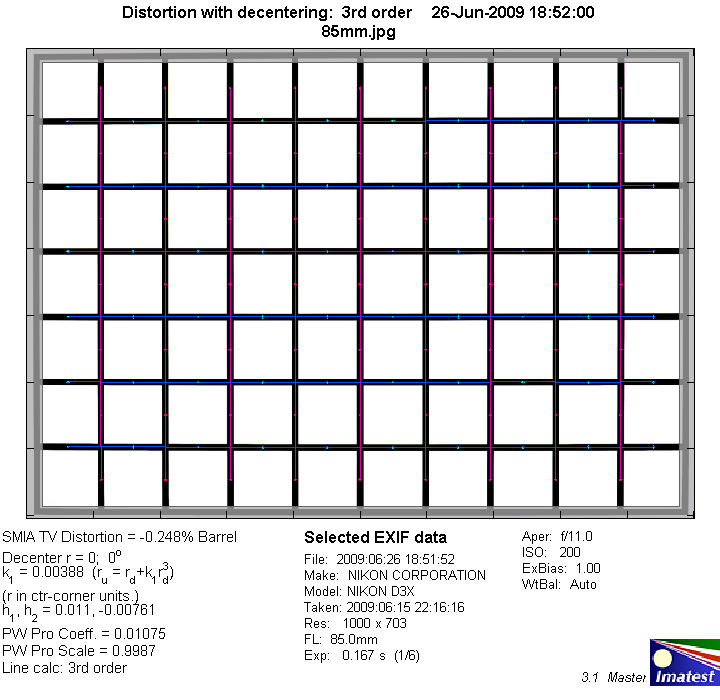|
Page 2 of 3

Distortion
The lens shows a very small amount of barrel distortion that is hardly field-relevant.

The chart above has a real-world size of about 120x80cm.
Vignetting
Typical for most fast primes the corners darken visible wide open. However, stopped down to f/2.8 the issue is reduced considerably and well under control at f/4 and beyond.
We're performing our vignetting analysis based on
(uncorrected) JPEGs straight from the camera. The JPG engine of the Nikon D3x features a rather flat
gradation curve, thus has a moderate contrast characteristic, resulting in comparatively low vignetting figures - the
corresponding Canon figures are roughly 40% higher due to the more
aggressive default contrast setting.

MTF (resolution)
The image center shows very good resolution wide open already. Stopped down to f/2.8 and beyond, the resolution is excellent at all tested aperture settings.
The borders and corners follow only slightly behind with very good sharpness wide open, too. Stopped down to f/5.6 the sharpness reaches excellent values here. F/5.6 also marks the global peak performance of the lens with excellent sharpness across the whole frame.
Please note that the MTF results are not directly comparable across the different systems!
Below is a simplified summary of the formal findings. The chart shows line widths
per picture height (LW/PH) which can be taken as a measure for sharpness.
If you want to know more about the MTF50 figures you may check out the corresponding
Imatest Explanations

Chromatic Aberrations (CAs)
Chromatic aberrations (color shadows at harsh contrast transitions) are very low and exceptionally well controlled.

Bokeh
One of the primary usage scenarios for a large aperture lens is to seperate the main subject from the background. In such an image the quality of the bokeh (out-of-focus blur) is of major significance.
The image blur in front of the focal plane is very smooth, however that's not something you'll often benefit from in real world shots. Behind the focal plane the bokeh quality is a bit lower, with slightly nervous blur.
Background highlights show some outlining wide open that can be reduced by stopping down. At large apertures the highlights have a circular shape (except towards the image borders, where they are slightly cut off due to mechanical vignetting), but stopped down the shape of the aperture begins to form polygons instead.

Bokeh Fringing
Bokeh fringing is a common issue with relatively fast glass. It's visible as halos of different colors in out-of-focus areas - magenta (red + blue) in front of the focus point
and green beyond.
Typical for most fast primes the AF-D 85 shows noticeable bokeh fringing at large aperture settings, which can of course be reduced by stopping down.
|